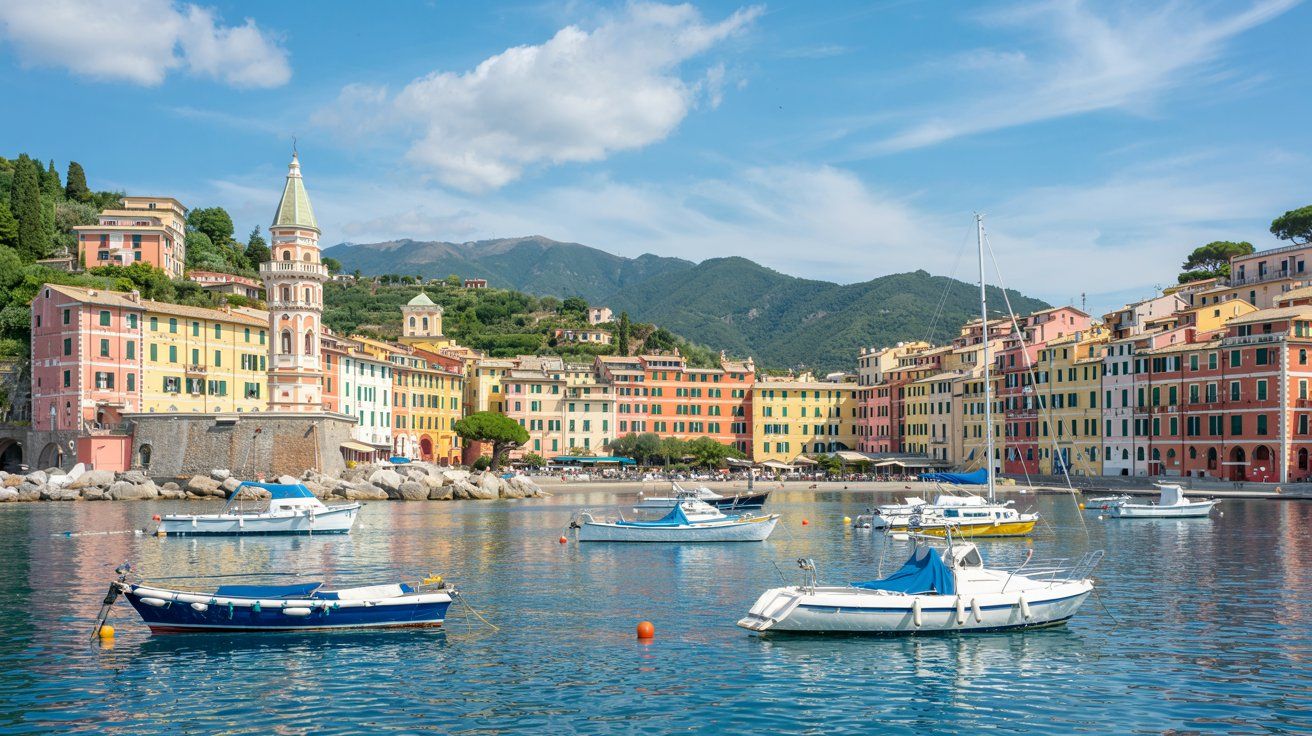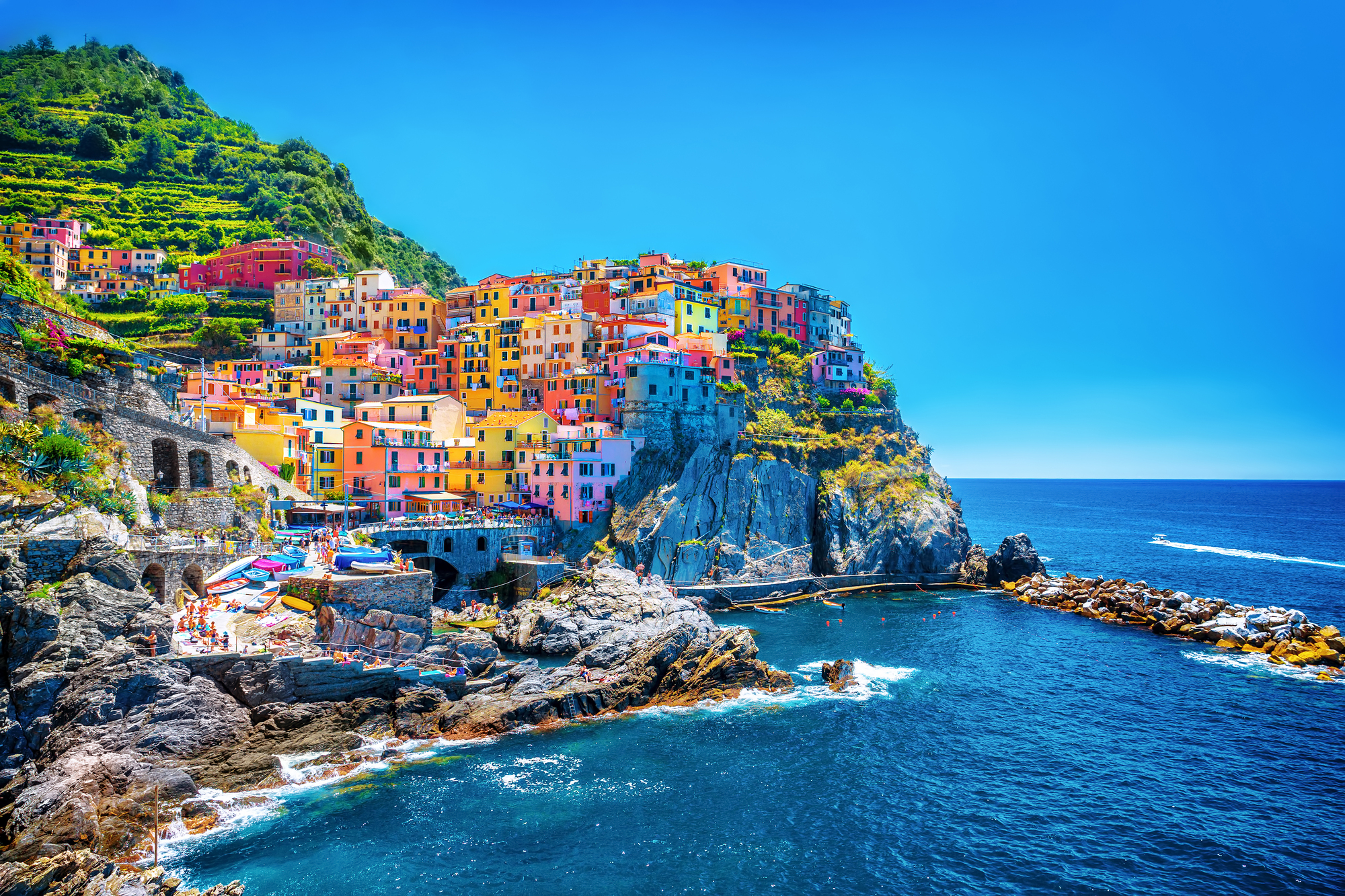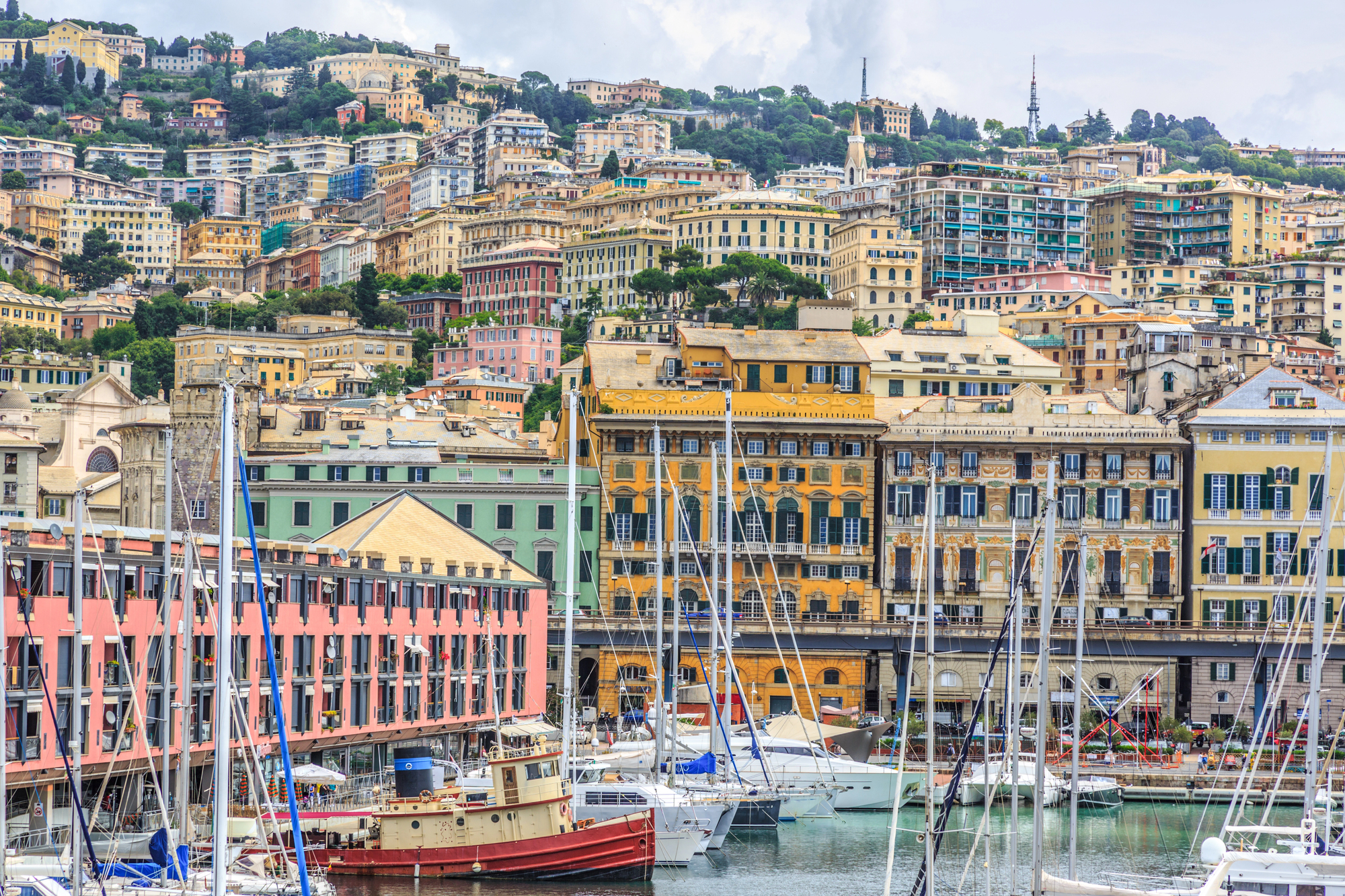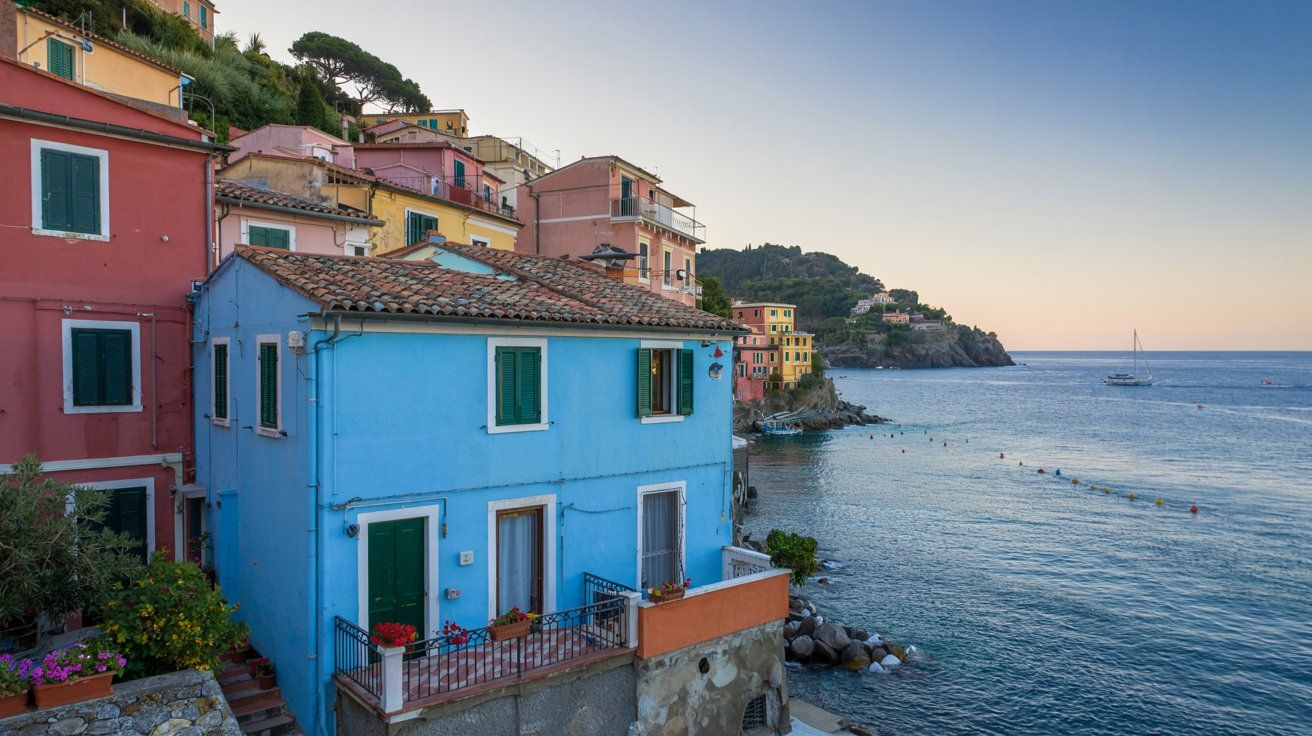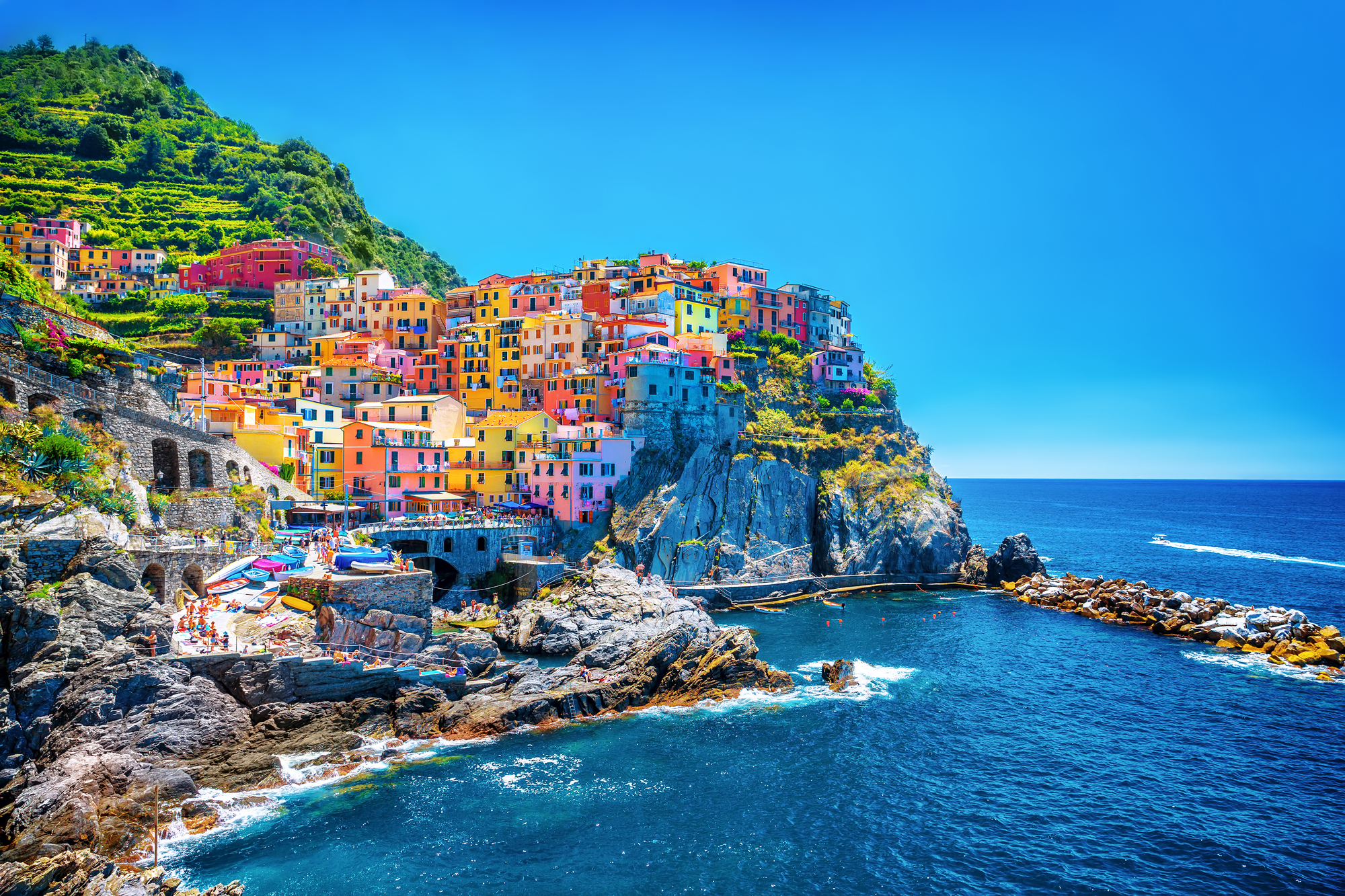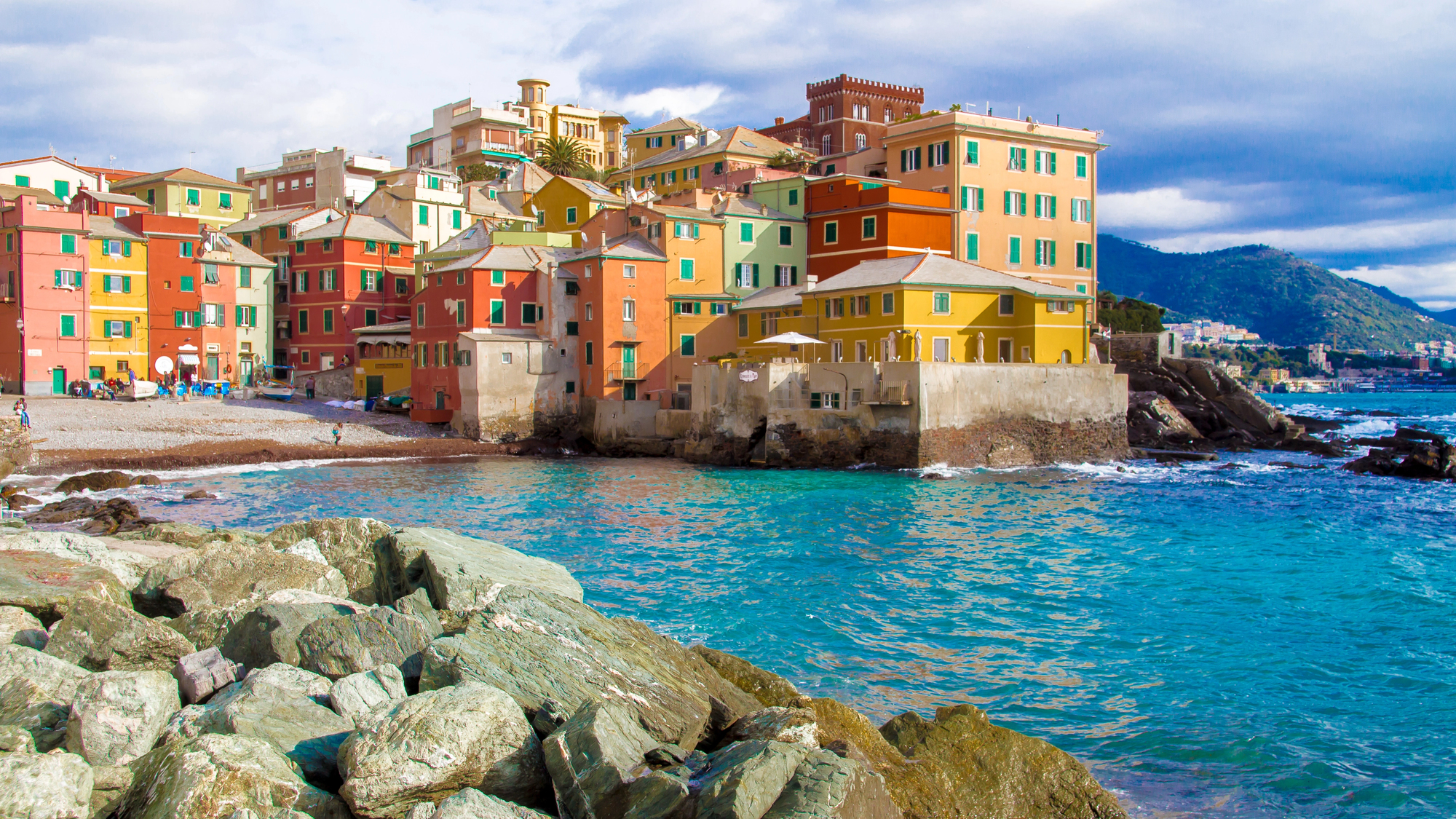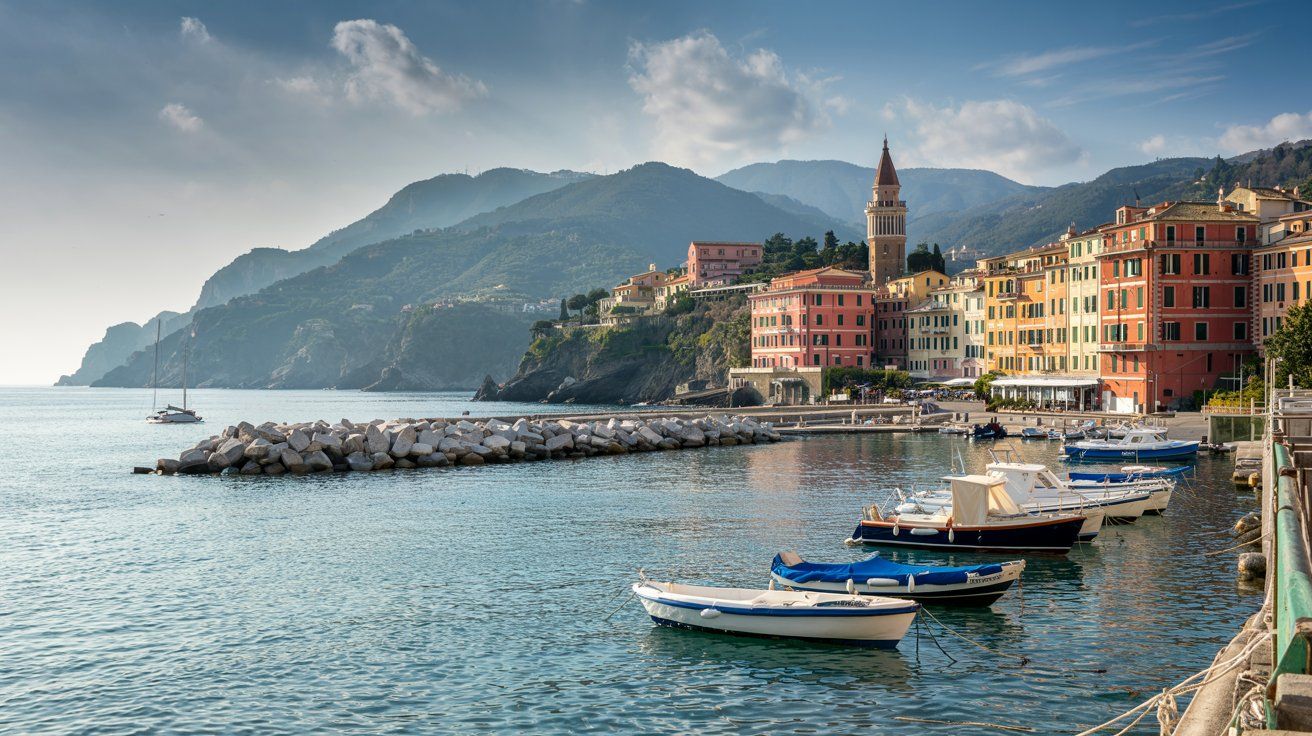The Italian Riviera hits its stride in late July. The coastline is alive, locals and travelers both out soaking up the long days and that classic Mediterranean warmth. If you’re here this week, you’ve got a sweet mix of culture, adventure, and lazy beach time waiting for you all along the Ligurian coast.
You could be hiking cliffside trails, wandering old fishing villages, catching a festival after dark, or just eating your way through the region. With medieval towns, perfect beaches, and old ports, there’s something for every mood—whether you’re up for a challenge or just want to relax. July’s weather rarely disappoints, so it’s a great time to get out on the water or explore on foot.
Find available hotels and vacation homes instantly. No fees, best rates guaranteed!
Check Availability Now
1) Hike the Cinque Terre trails for stunning coastal views
The Cinque Terre coastal trail links five vibrant villages along 12 kilometers of dramatic coastline. You’ll wind through vineyards, olive groves, and pine woods, with the Mediterranean always in view.
The Blue Trail draws the most hikers. It runs from Riomaggiore to Monterosso al Mare, passing through each village—sometimes on easy paved stretches, sometimes up steep, rocky hillsides.
There are 48 different paths covering over 120 kilometers, so you’re not stuck with the whole trek if you want something shorter. Trains connect the villages, making it easy to hike a section and catch a ride back.
This week’s forecast? Clear skies and pleasant 25°C days—pretty much ideal for hiking. If you start early, you’ll beat the crowds and the heat. The Sanctuary of Montenero is a prime spot for a break and some panoramic photos.
Bring plenty of water, decent shoes, and sunblock. Trail conditions can change, so double-check for any closures. The views from these cliffs really are something else.
2) Explore the colorful village of Portofino and its harbor
Portofino rests about 30 kilometers southeast of Genoa, tucked into the Ligurian coast. This tiny fishing village of about 500 people turns into a lively hotspot every summer.
The harbor is the heart of it all. Pastel houses in yellow, pink, and orange line the water, with luxury yachts bobbing next to old fishing boats.
Stroll the harbor promenade toward the main piazza. Cafes and restaurants fill the first floors of the old buildings. It’s not cheap—espresso can run €3-4, lunch easily €25-35 per person—but the setting is worth it for most.
You get crystal-clear waters and waterfront dining with sweeping Ligurian Sea views. If you’re into photography, early mornings are best before the crowds roll in.
From 11 AM to 4 PM, tour buses flood the village. If you want peace, come before 10 or after 5. Parking’s a pain, so the bus from Santa Margherita Ligure might save some hassle.
3) Visit San Fruttuoso Abbey accessible by boat or hike
San Fruttuoso Abbey hides away in a cove between Camogli and Portofino. You can only get there by boat or on foot, so it feels a world apart.
The ferry from Camogli takes about half an hour and costs around €15 each way. Boats run several times a day in summer.
If you’re up for a challenge, hike in. The trail from Camogli gets steep and technical, especially as you drop down to the cove.
Inside, the abbey’s weathered stone and soft arches speak of centuries past. Wander the chambers and imagine the Benedictine monks who once called it home.
There’s a small pebble beach for a swim in clear water. You can grab food and drinks, but expect to pay extra due to the remote spot.
You’ll want to budget 3-4 hours including travel. The abbey closes at 5 PM, so don’t cut it too close.
4) Enjoy fresh seafood dining in the fishing village of Camogli
Camogli still feels like a real fishing village, despite the uptick in visitors. Bright houses line the harbor, and local boats bring in the day’s catch.
Fresh anchovies are everywhere, served in pasta, as starters, or grilled with herbs.
La Camogliese puts you right by the sea with outdoor seating and big seafood platters. The staff is friendly and used to international guests.
La Bossa di Mario Wine Bar mixes Brazilian music with Ligurian dishes—its terrace is a great spot to unwind.
Most places source their fish straight from the harbor. Prices are fair, especially compared to the big-name resorts.
Book ahead for dinner, especially on weekends. Many restaurants close between lunch and dinner, so check hours.
You’ll find everything from casual bites to upscale dining. Take a stroll along the harbor and see what catches your eye.
5) Take a boat tour along the Ligurian coastline
Getting out on the water is a must. Boat tours along the Ligurian coast reveal villages and coves you’d never see from land.
Tours leave from Genoa, La Spezia, Portofino, and other hubs. You’ll pass painted houses clinging to cliffs, hidden harbors, and maybe even spot dolphins if you’re lucky.
Options range from two-hour cruises to full-day adventures. Some stop at secret beaches only boats can reach.
July usually brings calm seas and clear skies. Mornings are cooler, afternoons have that golden light for photos.
You’ll find everything from zippy motorboats to roomy catamarans. Some tours include swim stops; others focus on the scenery and stories.
Book ahead—summer fills up fast. Prices depend on tour length and extras like meals or snorkel gear.
6) Attend an evening festival or live music event in Santa Margherita Ligure
Santa Margherita Ligure lights up after dark. The town’s summer calendar is packed with evening events—concerts, theater, art shows, you name it.
Live music pops up all over, from jazz to pop, in bars and on outdoor stages. Cafes and local bars often host karaoke or smaller gigs, letting you catch local talent up close.
Plaza Café is a go-to for cocktails, happy hour, and live music in a chill setting—great for people-watching or chatting with locals.
Keep an eye out for special performances at galleries or theaters. The cultural scene often highlights Ligurian artists and feels more genuine than the usual tourist fare.
Most venues cluster near the harbor. Shows usually start around 8 PM and go until midnight, so you can grab dinner first and not miss a thing.
7) Relax on the beaches of Monterosso al Mare
Monterosso al Mare boasts the biggest beach in all of Cinque Terre. If you want sand and space, this is the spot.
There’s a free public area and several paid beach clubs. Renting an umbrella and chair runs about 25-30 euros a day, or you can stake out a spot on the free sand.
Elegant resorts, charming apartments, and vacation rentals with immediate confirmation. From Portofino to Cinque Terre, discover the most beautiful coastal towns of Liguria!
See Available Properties
The bay keeps the water calm. July’s sea is warm enough for long swims, and the vibe is relaxed.
Beach clubs will bring drinks and snacks right to your chair. It’s pricier but saves you lugging stuff down from the village.
This seaside scene sets Monterosso apart from the other Cinque Terre towns, so it does get busy. Arrive early to snag a prime spot before the crowds pour in.
The beach faces west, so cliffs throw some afternoon shade—super handy when the sun’s blazing.
8) Discover Genoa’s historic port and aquarium
Genoa’s Porto Antico blends old maritime grit with modern flair. The port area keeps its medieval bones but adds attractions that celebrate the city’s seafaring roots.
The Aquarium of Genoa is massive—one of Europe’s largest. Opened in 1992 for Columbus’s 500th, it houses over 70 tanks with dolphins, sharks, and local sea life.
Around the port, you’ll find maritime museums and revamped warehouses. Wandering here, you get a real sense of Genoa’s past as a maritime powerhouse.
Set aside a few hours—three or four is about right. The aquarium needs advance booking in summer, especially on weekends. Adult tickets are around €29.
From the port, you can walk straight into Genoa’s medieval center and explore narrow alleys and grand palaces after the waterfront.
Try coming early or late for fewer crowds and better light for photos.
9) Sample Ligurian focaccia and pesto in local eateries
You can’t visit the Italian Riviera without tasting real focaccia and pesto. These are the region’s pride and joy—look for them in bakeries, markets, and family-run trattorias.
Ligurian focaccia isn’t like what you’ll find elsewhere. It’s thin, crisp, and glossy with olive oil, sometimes topped with onions or olives.
Genoa’s bakeries and market stalls crank out fresh focaccia twice a day—catch it warm at 9 AM or 4 PM for the best bite.
Pesto was born here, made with local basil, pine nuts, garlic, olive oil, and cheese. Every place does it a little differently, so try a few versions if you can.
Santa Margherita’s local spots often serve focaccia with pesto—locals love this combo.
If you want the real deal, skip touristy spots near big attractions. Street vendors and casual restaurants usually nail the flavor and keep prices down.
10) Tour the medieval villages of the Riviera di Ponente
The western Italian Riviera hides clusters of medieval villages that most travelers simply miss. These old settlements are tucked away inland, nestled in valleys or clinging to hillsides.
Dolceacqua, Apricale, and Seborga stand out for their remarkably preserved medieval architecture. Wandering their narrow cobblestone lanes, you’ll find original stone buildings that feel almost unchanged by time.
You can drive between all three villages in a day, winding along roads that pass through olive groves and vineyards. These same groves and vines have shaped the region’s life for generations.
Dolceacqua has a striking 15th-century bridge linking the old town to castle ruins. If you’re into wine, the local Rossese is worth a try—just pop into a cantina.
Apricale sits 273 meters up, with frescoed churches from the 12th century. The village square livens up on Thursdays for the weekly market.
Seborga, a quirky spot, claims to be an independent principality (though Italy disagrees). They mint their own coins and even elect a prince. It’s a fun oddity you won’t find elsewhere.
You’ll find a couple of restaurants in each village, mostly serving Ligurian classics. Three to four hours gives you enough time to soak up all three places without rushing.
Travel Tips for Visiting the Italian Riviera in July
July hits with full summer heat—temperatures can hit 28°C, and the crowds are out in force. Pack light layers, book your transport early, and be mindful of siesta hours when everything seems to pause.
Weather and What to Pack
Expect nights around 20°C and days up to 28°C. The sun can be relentless, especially from late morning to mid-afternoon.
Essential Items:
- Sun protection: SPF 30+ sunscreen, a wide-brimmed hat, sunglasses
- Light clothing: Go with cotton or linen—nothing too heavy
- Comfortable walking shoes: Those cobblestones aren’t forgiving
- Light jacket: Coastal evenings get breezy
- Rain jacket: Sudden afternoon showers do happen
If you’re visiting churches or nicer restaurants, bring something modest—covered shoulders, longer pants. Some spots won’t let you in otherwise.
Easy booking across stunning accommodations from historic hotels to modern retreats. Pastel-colored buildings and crystal waters create the perfect Mediterranean escape!
Secure Your Italian Getaway
A refillable water bottle is a must. The humidity makes it feel hotter than the numbers suggest, so staying hydrated is non-negotiable.
Public Transportation and Getting Around
Trains run up and down the coast, connecting the main towns quickly. In peak season, you’ll catch one every 20-30 minutes between La Spezia and Genoa.
Transportation Options:
- Cinque Terre Card: €16 for unlimited train rides between the villages
- Regional trains: Link up spots like Portofino, Santa Margherita, and Rapallo
- Buses: Reach hillside towns that trains skip
- Ferries: Connect Portofino, Cinque Terre, and other coastal towns
If you’re driving, try to book a place with parking. Street spots disappear fast, and historic centers often don’t allow cars.
Buy your train tickets before boarding—inspectors don’t mess around, and fines are steep. Don’t forget to validate paper tickets at the yellow machines on the platform.
Ferry schedules shift with the weather. It’s best to check up-to-date times at the port or online before you plan a trip.
Local Etiquette and Safety
Restaurants usually close from 3 PM to 7 PM, and shops often follow suit, reopening for the evening.
Cultural Guidelines:
- Dress modestly for churches
- Keep your voice down on public transit
- Tipping 10% is the norm at restaurants
- Don’t eat or drink on church steps
Swimming is generally fine, but always check the beach flags—red means stay out.
Pickpocketing picks up in summer, especially in crowds. Keep your stuff secure and don’t flash valuables.
If you want a table for dinner, book ahead. Spots in Cinque Terre and Portofino can fill up weeks in advance in July.
Maximizing Your Italian Riviera Experience
Summer crowds make planning ahead pretty much essential—think reservations for meals and figuring out your transport. If you’re willing to wander off the beaten path, you’ll find slices of Ligurian life that most tourists skip. Late July brings festivals and events that can be a real window into local culture.
Making Reservations and Booking in Advance
Restaurant bookings are a must in July. The best places in Portofino and Cinque Terre can be booked out two or three days ahead.
It’s better to call restaurants directly. Many family-run trattorias skip online systems but will hold a table if you ring up (a bit of Italian helps, but English usually works).
Transportation takes some forethought this time of year. You can get same-day train tickets between most coastal towns, but ferries to Portofino and San Fruttuoso have limited spots.
Book ferry tickets online at least a day before, especially for the popular 9:00 AM and 2:00 PM departures from Camogli to San Fruttuoso—they go fast on weekends.
Accommodation in smaller villages like Manarola or Corniglia tends to be easier to find than in Monterosso al Mare. Staying inland in Levanto or Sestri Levante can mean better prices and less hassle.
Exploring Lesser-Known Villages
Tellaro sits just south of Lerici—fifteen minutes’ drive—and has medieval stone houses and a tiny fishing harbor. Even in July, it’s peaceful, with just three restaurants.
Camogli is all about real Ligurian fishing life, no tour buses in sight. The fish market pops up every Thursday morning, and the focaccia shops open bright and early.
Noli gives you medieval architecture and a sandy beach only half an hour from Savona. The town walls go back to the 12th century. Parking’s a lot cheaper here—€2 an hour compared to €5 in the famous towns.
Dolceacqua lies inland near the French border, with its iconic bridge and wine tasting rooms. Monet painted it, and you can taste Rossese wines for €8-12 a head.
Meals in these villages are usually 30-40% less than in Cinque Terre. Local buses run to main coastal train lines every couple of hours, so you’re not stranded.
Cultural Events and Seasonal Highlights
Festa della Madonna del Mare lights up Camogli on August 15th, though you’ll spot folks prepping as early as late July. Fishermen get creative, decking out their boats with lights and flowers—honestly, it’s a sight worth catching.
Sagra del Pesto rolls through July weekends across different villages. Genoa’s version? It’s all about pesto-making battles and tasting sessions, usually for €5-8 a head. If you’re into pesto (and who isn’t?), this is your jam.
Evening concerts pop up in village squares all summer. Monterosso goes classical on Tuesday nights, while Vernazza leans into folk music every Friday. The vibe shifts from mellow to lively depending on the crowd.
Local markets really step up during peak season. Genoa’s Mercato Orientale buzzes Monday to Saturday, stretching hours till 7:30 PM in summer. There’s just more of everything—produce, pastries, you name it.
Beach festivals line the coast with food stalls and live music. Over in Sestri Levante, Baia del Silenzio hosts unplugged sets every Wednesday evening in July. Sometimes the sea breeze steals the show.
Event dates and times? They tend to shift with the weather or local holidays, so it’s smart to check with the tourist office before heading out.
From seaside palazzos to hillside villas, find your perfect stay along this stunning stretch of Mediterranean coastline. Instant booking with best price guarantee!
Browse Accommodations Now

